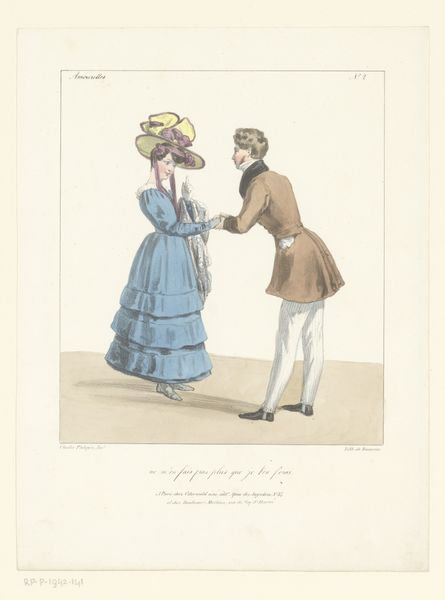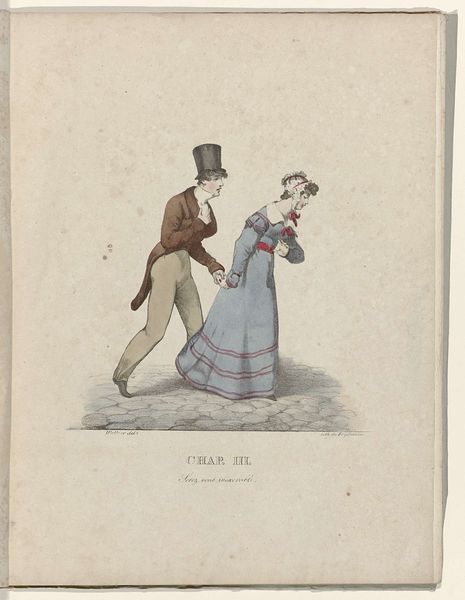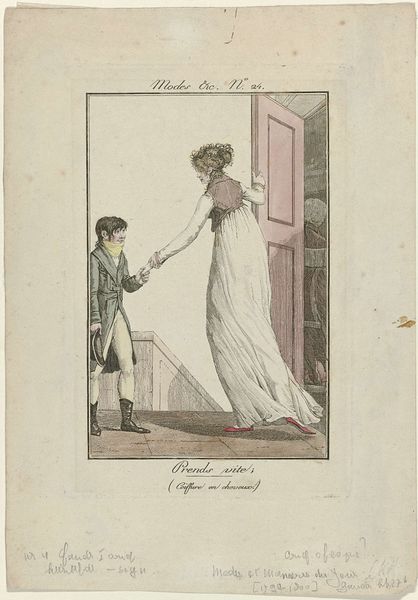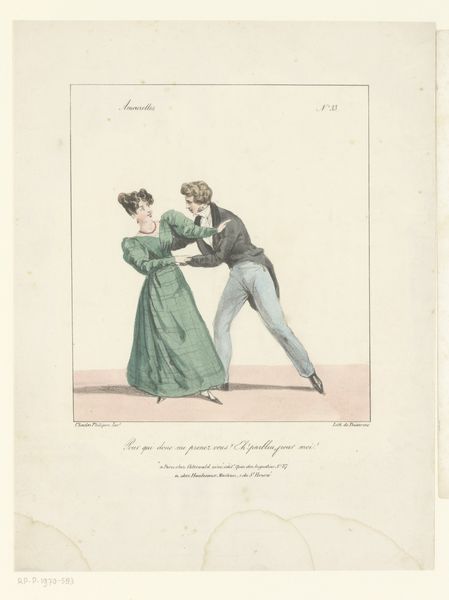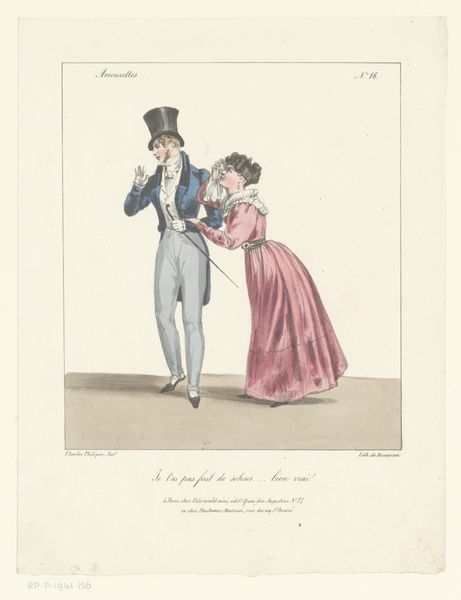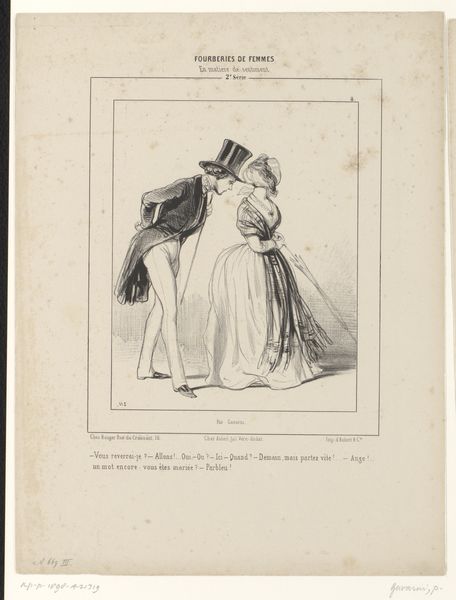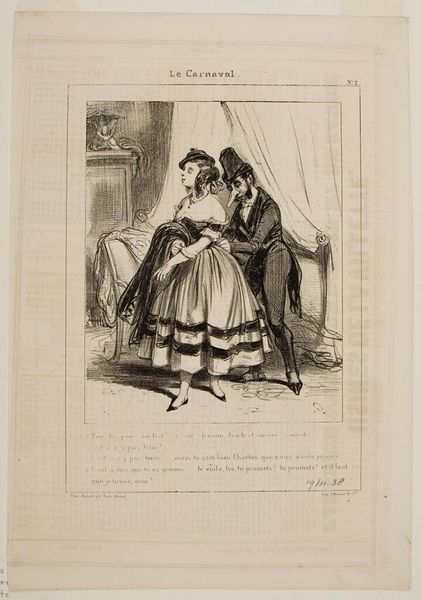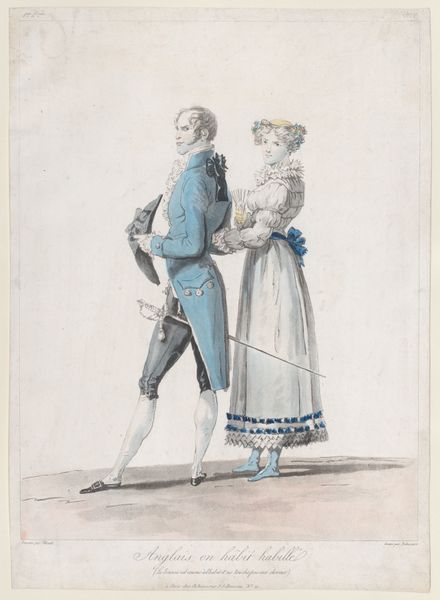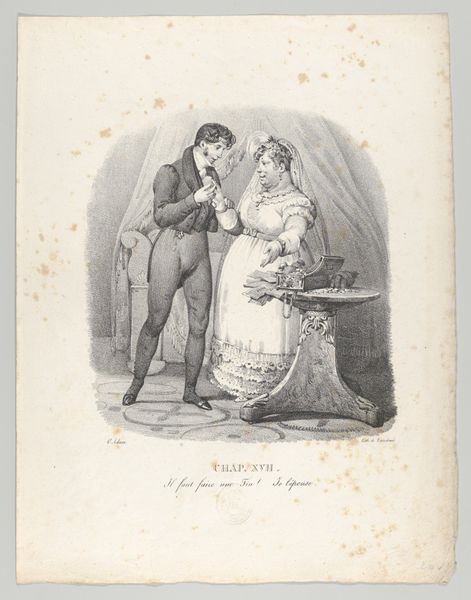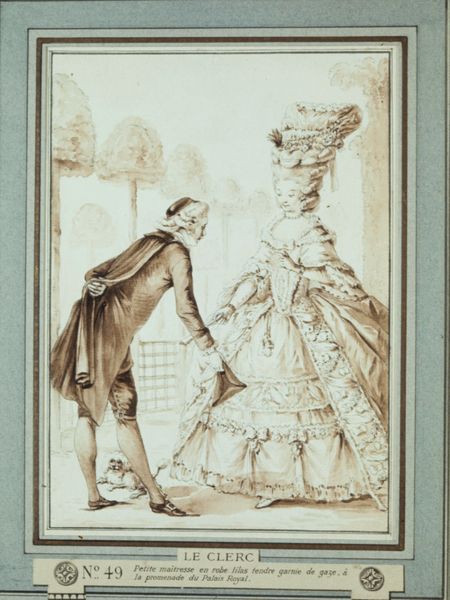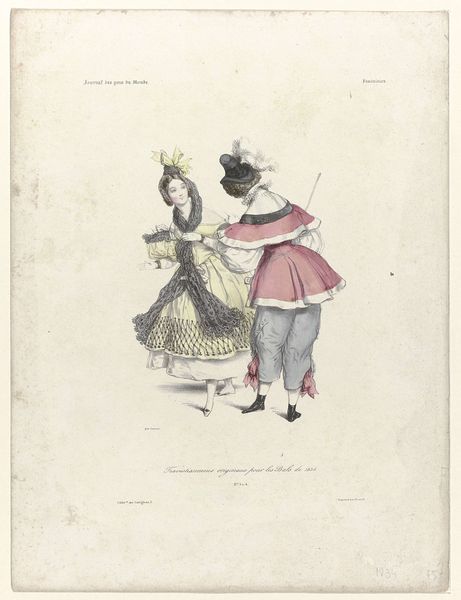
A man and woman dancing the Zamacueca, from a group of drawings depicting Peruvian dress 1843 - 1853
0:00
0:00
drawing, print, paper, watercolor
#
drawing
# print
#
figuration
#
paper
#
watercolor
#
coloured pencil
#
romanticism
#
genre-painting
#
watercolor
Dimensions: Sheet: 8 11/16 × 8 1/16 in. (22 × 20.5 cm)
Copyright: Public Domain
Curator: Look at this, a watercolor and ink drawing on paper by Francisco Fierro, likely created between 1843 and 1853. It’s titled "A man and woman dancing the Zamacueca, from a group of drawings depicting Peruvian dress." Editor: It’s lovely, capturing such a vibrant moment! The dancer in red immediately draws my attention. I am also interested in the type of paper, the marks made by the media and if any preparatory sketches are under the top layers. It is difficult to deduce much with the flat reproduction image, though. Curator: Absolutely. Fierro was a keen observer of daily life in Lima. This drawing isn't just a pretty picture; it documents a specific dance, the Zamacueca, a predecessor to the Marinera, set within the broader context of Peruvian society and its evolving cultural identity in the mid-19th century. Editor: So it functions almost as a kind of…visual ethnography? I wonder what materials he had access to, how he obtained his paper and pigments? What would his source for those amazing clothes that clearly have a very strong manufacturing lineage. The lace the woman is wearing... and then how does that interact with the local population's attire at this moment. Curator: Precisely! And understanding the paper quality and the sourcing of the pigments does inform our understanding of the social stratification Fierro depicted. Was he commissioned by the elite to capture these scenes, or did he operate more independently, selling to a broader market? That tension between capturing "authentic" Peruvian life and catering to European tastes would have shaped his output, I imagine. Editor: Definitely a relevant element to analyze. I bet there’s also the question of artistic labor. Did he prepare his own materials? How did this all fit in with workshops in Lima? I also would really like to consider its acquisition in museum collections in the context of the art market at large! Curator: All critical avenues for further research! The work is not merely an aesthetic object. This is part of a wider social and economic network. Looking at his practice this way adds layers of understanding of artistic exchange at that time. Editor: This lens makes you realize how valuable Fierro’s art is! He captured movement, and labor with minimal yet significant access to production processes for high society Peruvian dress. Curator: It does offer a fascinating lens into both Peruvian history and global trade. Editor: A vibrant historical artifact.
Comments
No comments
Be the first to comment and join the conversation on the ultimate creative platform.
